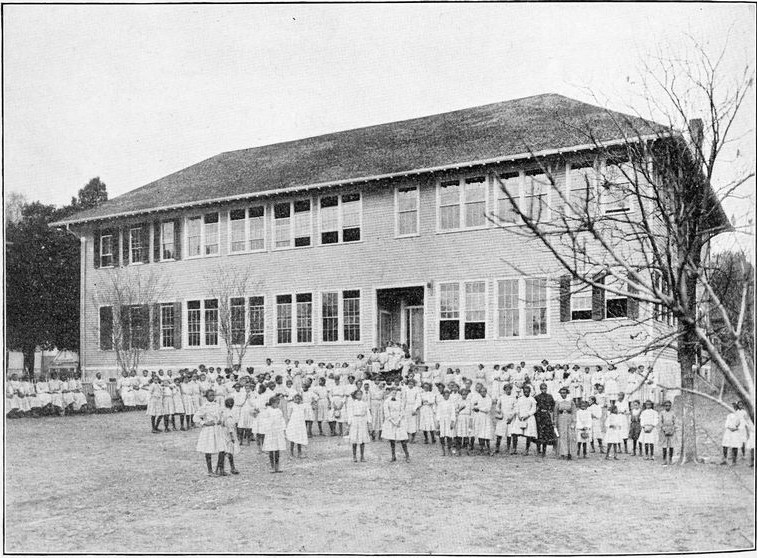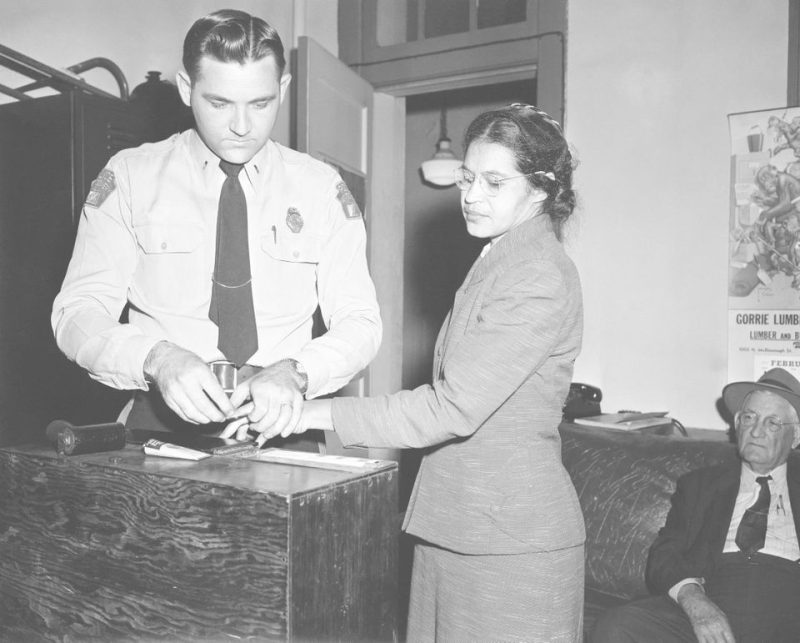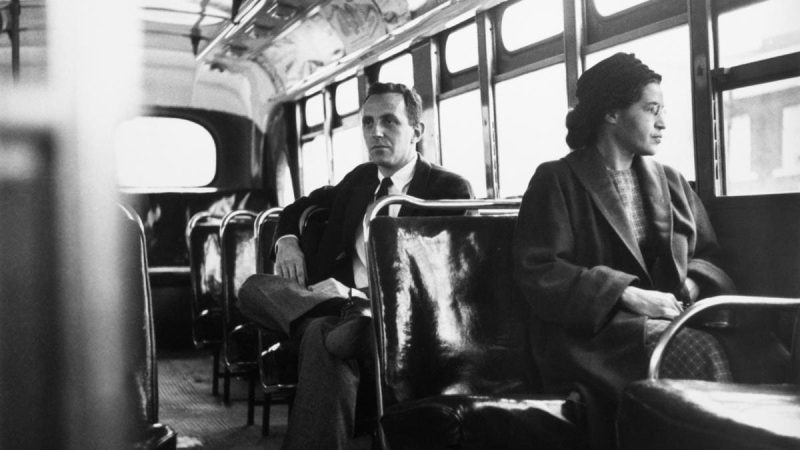| City/Town: • Abbeville |
| Location Class: • Residential |
| Built: • N/A | Abandoned: • N/A |
| Historic Designation: • African American Heritage Site |
| Status: • Abandoned • Endangered |
| Photojournalist: • David Bulit |

Rosa Parks was born Rosa Louise McCauley on February 4, 1913, in Tuskegee to Leona, a school teacher, and James McCauley, a skilled carpenter and stonemason. Shortly after her birth, her family moved into this house in Abbeville situated on a 260-acre farm owned by her grandparents, Anderson and Louisa McCauley. Her father would go on to design and construct the Henry County Training School for black students in 1914.
When her parents separated, Rosa McCauley and her mother moved to Pine Level, just outside of Montgomery, to live with her maternal grandparents and her father moved to California for better opportunities. Rosa attended rural schools until the age of eleven. Between 1924 and 1929, she attended the Montgomery Industrial School for Girls where she took academic and vocational courses. She went to a laboratory school set up by the Alabama State Teachers College for Negroes for secondary education but dropped out in order to care for her grandmother and mother after they became ill. The Industrial School was founded and staffed by Alice White and H. Margaret Beard, two white Christian education reformers who believed in racial equality whose aim was to give their students a sense of pride during a time of racial segregation. Alice White later wrote a letter to Rosa parks just before her death in 1935 which Parks considered one of her prized possessions and a reminder that not all whites were racist. Although she recounted early memories of the kindness she received from white strangers, she never forgot nor could she ignore the racism in her society. When the Ku Klux Klan marched down the street in front of her house, her grandfather guarded the front door wielding a shotgun.

In 1932, Rosa married Raymond Parks, a barber from Montgomery and a member of the National Association for the Advancement of Colored People (NAACP) who at the time were collecting money to support the defense of the Scottsboro Boys, a group of nine African American teenagers falsely accused of raping two white women on a train. In 1943, Parks became active in the civil rights movement by joining the Montgomery chapter of the NAACP, though she only worked there as a secretary until 1957 as it was considered a woman’s job. She worked for the local NAACP leader Edgar Nixon who maintained that “Women don’t need to be nowhere but in the kitchen.”
During the Jim Crow era, Montgomery buses were segregated in that the first four rows of seats were reserved for white passengers and the back of the bus was the “colored” section, even though blacks composed more than 75% of the ridership. These sections were not fixed and were determined by a moveable sign controlled by the bus driver. The driver could move the “colored” sign or remove it entirely as it was up to their discretion. Black people were allowed to sit in the middle rows until the white section filled up, causing blacks to move to the back of the bus or if there was no room, leave the bus altogether. Black people were also not allowed to sit in the same row as a white person. If white people were already sitting in the front rows, black people would have to pay the fare, exit the bus, and reenter through the rear of the bus. In 1943, Rosa Parks boarded a bus and paid the fare. After taking a seat, bus driver James F. Blake told her to follow city code and to reenter the bus from the rear. As Parks got off the bus, the bus drove off without her, leaving her in the rain.

In November 1955, Rosa Parks attended a meeting at the Dexter Avenue Baptist Church in Montgomery that addressed the recent murders of activists George W. Lee and Lamar Smith. It also addressed the case of Emmett Till, a 14-year-old black teenager who was brutally murdered for whistling at a white woman in the small town of Money, Mississippi while visiting family from Chicago. Till was kidnapped from his family home at gunpoint by the woman’s husband, Roy Bryant, and his half-brother John William Milam, and taken back to a shed belonging to Milam. Till was beaten, shot in the head, and then dumped in the Tallahatchie River. Three days later, his body was found by two boys fishing along the river. His head was badly mutilated, an eyeball was dislodged from its socket, he was shot above the right ear, and his body was weighed down by an industrial fan fastened to his neck by barbed wire. His body was returned to Chicago after an extensive effort by his mother to halt an immediate burial of her son in Mississippi. His mother insisted on having an open-casket funeral so the world could see what was done to her son. Photos of Till’s mutilated corpse circulated the country, generating intense public reaction. While at the meeting, Parks and the others in attendance got word that Roy Bryant and John William Milam were found not guilty for Till’s kidnapping and murder. Protected against double jeopardy, the two men publicly admitted to murdering Emmett Till in an interview with Look magazine. This event was the catalyst for the second phase of the civil rights movement.
On December 1, 1955, Rosa Parks boarded a Montgomery bus, paid the fare, and sat down in the front row of the “colored” section, just behind the section reserved for white passengers. She didn’t take notice that the bus was operated by James F. Blake, the same driver who left without her in 1943. The bus traveled along its regular route until all the seats in the whites-only sections were filled. Blake moved the “colored” section sign a row over and demanded those sitting in the middle row to move. Three of the passengers complied and moved to the back, but Parks moved towards the window seat, refusing to move to the “colored” section. Parks was arrested and charged for violating segregation law and was bailed out that evening by Edgar Nixon of the NAACP and her friend, Clifford Durr. In protest, a bus boycott was organized on the day of her trial where she was found guilty and fined $10 plus $4 in court fees. The boycott was such a success, it continued under the leadership of Martin Luther King Jr., who at the time was a young and unknown minister of the Dexter Avenue Baptist Church, and was relatively new to the city of Montgomery. The boycott continued for 381 days, severely damaging the bus transit system’s finances until the transportation system was legally integrated.

After her arrest, Parks became an icon of the Civil Rights Movement but suffered much hardship because of it. She lost her job at a department store and her husband quit his job after his boss forbade to speak about his wife or the legal case. They moved to Detroit, Michigan for a variety of reasons; Parks was unable to find work in Montgomery, she disagreed with Martin Luther King Jr. and other leaders of the city’s civil rights movement on how to proceed, and she was constantly receiving death threats. She started a new life for herself, working as a secretary and receptionist in U.S. Representative John Conyer’s congressional office and also served on the board of the Planned Parenthood Federation of America. In 1994, her home was broken into wherein the perpetrator physically assaulted Parks, who at the time was 81, and robbed her of $50. After finding out about the incident, federal judge Damon Keith sought to find her a new, safer apartment in downtown Detroit. After reading the story in the newspaper, Little Caesars Pizza founder and Detroit Tigers owner Mike Ilitch offered to pay for Parks’ housing indefinitely.
On October 24, 2005, Parks died at her apartment in Detroit at the age of 92. Her death was marked with a number of memorials throughout the country, including lying in honor at the Capitol Rotunda in Washington D.C. She was the 31st person, the first American who wasn’t a United States government official, and the second private person to be honored in this way. An estimated 50,000 people viewed the casket there. Parks was buried in Detroit’s Woodlawn Cemetery alongside her husband and mother.







